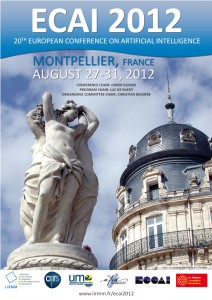

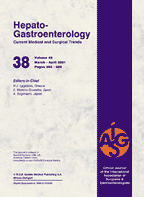
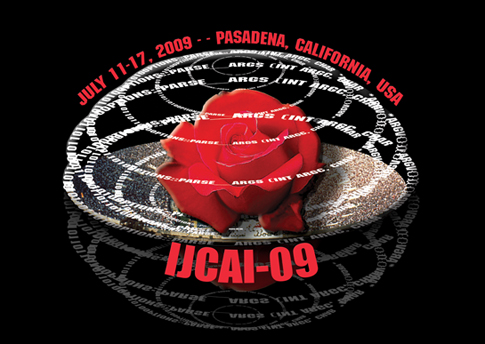


Supplementary information



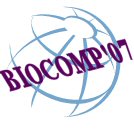
Supplementary information

Supplementary information


IJSWIS
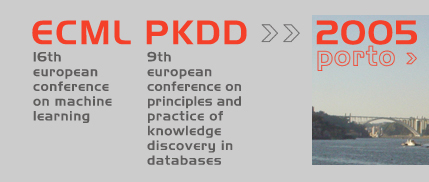
Supplementary information

Supplementary information
tics-04
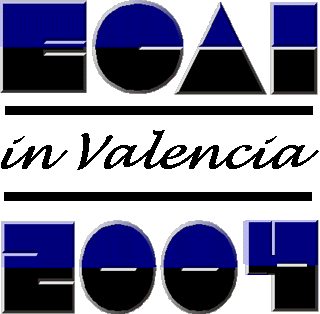
Supplementary information

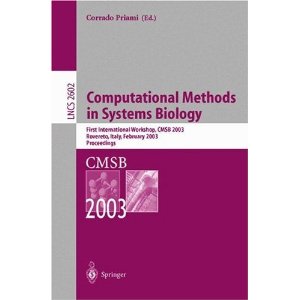

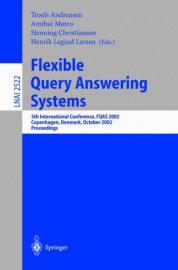
FQAS-2002


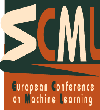

DL-2000




DL-98


DL-95

| Head of the Artificial Intelligence and Bioinformatics group
Senior Researcher I National Institute for Research and Devepoment in Informatics (ICI) 8-10 Averescu Boulevard Bucharest, Romania tel: +40-21-3160759 fax: +40-21-3160539 b a d e a <at> i c i . r o |
Index
Areas of Research Research Publications Systems developed European Projects National Projects |
I also studied sparse factorizations such as Nonnegative Matrix Factorization (NMF) as clustering methods for gene expression data allowing for overlapping clusters [31,32,34]. The stability of clustering with nonnegative factorizations was addressed using an original meta-clustering approach based on Positive Tensor Factorization (PTF) [32,37,42]. A nontrivial generalization of hierarchical clustering dendrograms to biclustering was developed in [44] and applied to the genomic subclassification of colon cancer.
A combined use of microarray gene expression data, functional annotations in terms of the Gene Ontology as well as an inductive learner (based on Inductive Logic Programming) have allowed us to automatically obtain functional descriptions discriminating genes differentially expressed in two types of lung adenocarcinoma [24].
We are currently developing an ontology-based system for indexing, querying and text mining the biomedical literature (Biomine).
I have also been involved in the European Project SILK (System Integration via Logic and Knowledge) dealing with intelligent integration of legacy components. The SILK architecture contains a meta-model of the components to be integrated which is used by a specilized mediator for planning and splitting user queries into queries that can be dealt with by the components [20,23].
In order to be able to integrate complex applications with side-effects, we have developed an original partial order planning algorithm dealing with dependent fluents [22].
In the field of description logics (DLs), I have developed efficient inference algorithms for expressive description logics (such as those with the transitive closure of relations) [8]. Taking into account the correspondence with various extensions of the propositional dynamic logic (PDL), the obtained results are also applicable to modal, temporal and dynamic logics, as well as to modeling intelligent agents. TheRegAL [8] and ExClaim [14] systems are implementations of our approach.
I have also introduced the notion of concept reification in description logics [9].
In the area of machine learning, more precisely Inductive Logic Programming,
I have developed a (so-called) perfect refinement operator that
eliminates annoying problems occurring in all theories and implemented
ILP systems [13].
In [15], I have shown that the advantages of
completeness, non-redundancy and flexibility can be combined by constructing
a perfect refinement operator that is "flexible". This should enable a
more flexible traversal of the hypotheses space of an ILP system. Refining
complete clausal theories
has been investigated in [21].
In a different line of work I have constructed refinement operators for description logics (DLs) which are useful for developing learning systems in DL languages. [18] presents the first refinement operator for a DL and discusses the DL specific problems, such as example coverage, which are more complicated for DLs due to the Open World Assumption.
Additionally, I have considered the application of ILP in the domain of learning trading rules [19]. This application is interesting since it involves learning strategies in a domain in which there are no (or - in any case - very few) regularities in the historical data. It also leads in a natural way to dealing with the problem of learning from disjunctive examples (similar to multiple-instance learning).
I have also worked in the European joint project PEKADS, which has been focused on operationalizing the KADS knowledge based systems development methodology using description logics. In this framework, I have developed and implemented a logic-based language called ExClaim (having a meta-level architecture and supporting non-determinism) for describing and executing KADS models [14].
In the European project RENEGADE, I have worked on genetic algorithms based tools for tour planning and multiple vehicle routing.
 |
[47] Liviu Badea. Multirelational Consensus Clustering with Nonnegative Decompositions. Proceedings of the 20th European Conference on Artificial Intelligence ECAI 2012, Montpellier, France, August 27-31, 2012, pp. 97-102. Frontiers in Artificial Intelligence and Applications 242 IOS Press 2012, ISBN 978-1-61499-097-0. |
 |
[46] Liviu Badea. Unsupervised analysis of leukemia and normal hematopoiesis by joint clustering of gene expression data. Proceedings of the 2012 IEEE 12th International Conference on Bioinformatics & Bioengineering (BIBE), Larnaca, Cyprus, 11-13 November 2012. pp. 338-343. IEEE. ISBN: 978-1-4673-4358-9. |
 |
[45] Economescu MC, Necula LG, Dragu D, Badea Liviu, Dima SO, Tudor S, Nastase A, Popescu I, Diaconu CC. Identification of Potential Biomarkers for Early and Advanced Gastric Adenocarcinoma Detection. Hepato-Gastroenterology 2010; 58(104), pp. 1453-1464. PMID:21443102 |
 |
[44] Liviu Badea. Generalized Clustergrams for Overlapping Biclusters. Proceedings of the International Joint Conference on Artificial Intelligence IJCAI-09, Pasadena, pp. 1383-1388, 2009. |
 |
[43] Liviu Badea, Vlad Herlea, Simona Dima, Traian Dumitrascu, Irinel Popescu. Combined gene expression analysis of whole-tissue and microdissected pancreatic ductal adenocarcinoma identifies genes specifically overexpressed in tumor epithelia. Hepatogastroenterology. 2008 Nov-Dec; 55(88):2016-27. PMID:19260470 |
 |
[42] Liviu Badea, Doina Tilivea. Nonnegative
Decompositions with Resampling for Improving Gene Expression Data Biclustering
Stability. Proceedings of the European Conference on
Artificial Intelligence ECAI 2008, Volume 178, pp. 152-156, 2008.
Supplementary information |
 |
[41] Liviu Badea. Tracking the Dimensional Evolution of Gene Expression Biclusters. Proceedings of the 2008 International Conference on Bioinformatics & Computational Biology BIOCOMP-2008, pp. 116-121, CSREA Press 2008, ISBN 1-60132-055-8. |

|
[40] Liviu Badea. Extracting Gene Expression Profiles Common to Colon and Pancreatic Adenocarcinoma Using Simultaneous Nonnegative Matrix Factorization. Proc. Pacific Symposium on Biocomputing PSB-2008, pp. 267-278, World Scientific 2008. |
 |
[39] Liviu Badea. Toward a molecular-level understanding of biological processes by unsupervised analysis of gene expression data. Proceedings of the Romanian Academy, Vol. 8, nr. 3 September-December 2007. |
 |
[38] Liviu Badea. Combining
Gene Expression and Transcription Factor Regulation Data using Simultaneous
Nonnegative Matrix Factorization. Proc. BIOCOMP-2007, CSREA
Press, pp. 127-131.
Supplementary information |
 |
[37] Liviu Badea, Doina Tilivea. Stable
Biclustering of Gene Expression Data with Nonnegative Matrix Factorizations.
Proceedings of the International Joint Conference on Artificial Intelligence
IJCAI-07, Hyderabad, India, pp. 2651-2656.
Supplementary information |
|
|
[36] Liviu Badea. Combining DNA Copy Number and Gene Expression Data to Reveal Sample-Specific Genetic Abnormalities in Pancreatic Cancer. Studies in Informatics and Control, Vol. 15 No. 4, (2006), pp.403-413, ISSN 1220-1766. |
| [35] Liviu Badea. Semantic Web Reasoning for Analyzing Gene Expression Profiles. Proceedings Principles and Practice of Semantic Web Reasoning, PPSWR 2006, LNCS 4187, pp. 78-89, Springer Verlag. | |
 |
[34] Liviu Badea, Doina Tilivea. Meta-clustering Gene Expression Data with Positive Tensor Factorizations. Proceedings European Conference on Artificial Intelligence ECAI-06, p. 787, IOS Press 2006. |

IJSWIS |
[33] F. Bry, C. Koch, T. Furche, S. Schaffert, Liviu Badea, S. Berger. Querying the Web Reconsidered: Design Principles for Versatile Web Query Languages. International Journal On Semantic Web and Information Systems 1(2): pp. 1-21 (2005) ISSN:1552-6283 |
 |
[32] Liviu Badea. Clustering
and Metaclustering with Nonnegative Matrix Decompositions.
Proc. of the European Conference on Machine Learning ECML-05. Lecture Notes
in Artificial Intelligence, Vol. 3720, pp. 10-20, Springer Verlag, 2005.
(C)
Springer Verlag.
Supplementary information |

|
[31] Liviu Badea, Doina Tilivea. Sparse
Factorizations of Gene Expression Data guided by Binding Data.
Proceedings of the Pacific Symposium on Biocomputing PSB-2005, World Scientific
2005, pp. 447-458.
Supplementary information |
|
|
[30] Liviu Badea, Doina Tilivea, Anca Hotaran. Semantic Web Reasoning for Ontology-Based Integration of Resources. Principles and Practice of Semantic Web Reasoning, PPSWR 2004: 61-75, Lecture Notes in Computer Science 3208 Springer 2004. |
|
tics-04 |
[29] Rolf Backofen, Mike Badea, Pedro Barahona, Liviu Badea, François Bry, Gihan Dawelbait, Andreas Doms, François Fages, Carole Goble, Andreas Henschel, Anca Hotaran, Bingding Huang, Ludwig Krippahl, Patrick Lambrix, Werner Nutt, Michael Schroeder, Sylvain Soliman, Sebastian Will. Towards a semantic web for bioinformatics. (Poster) In: Proceedings of "Bioinformatics 2004", Linköping, Sweden (3rd - 6th June 2004), SocBIN - Society for Bioinformatics in the Nordic countries. |
 |
[28] Liviu Badea. Determining
the Direction of Causal Influence in Large Probabilistic Networks: A Constraint-Based
Approach. Proceedings of the European Conference on Artificial
Intelligence ECAI 2004, IOS Press, pp. 263-267.
Supplementary information |
|
|
[27] Liviu Badea. Extracting networks of influences from microarray data. ISMB-2004 poster. |
 |
[26] Liviu Badea. Inferring large gene networks from microarray data: a constraint-based approach. International Joint Conference on Artificial Intelligence IJCAI-03, Proceedings of the Workshop on Learning Graphical Models for Computational Genomics, 2003. |

|
[25] Liviu Badea, Doina Tilivea. Integrating biological process modelling with gene expression data and ontologies for functional genomics (position paper). Computational Methods in Systems Biology, Proceedings. LNCS 2602, pp.187-193. (C) Springer Verlag. |

|
[24] Liviu Badea. Functional discrimination of gene expression patterns in terms of the Gene Ontology. Proc. of the Pacific Symposium on Biocomputing PSB-2003, World Scientific 2003, pp.565-576. |

FQAS-2002 |
[23] Liviu Badea, Doina Tilivea. Intelligent Information Integration as a Constraint Handling Problem. Proc. of the Fifth International Conference on Flexible Query Answering Systems (FQAS-2002), October 27 - 29, 2002, Copenhagen, Lecture Notes In Computer Science, Vol. 2522, pp. 12-27, Springer Verlag, 2002. |
 |
[22] Liviu Badea, Doina Tilivea. Abductive Partial Order Planning with Dependent Fluents. In Franz Baader, Gerhard Brewka, Thomas Eiter (Eds.): KI-2001: Advances in Artificial Intelligence, Joint German/Austrian Conference on AI, Vienna, September 19-21, 2001. Lecture Notes in Computer Science 2174 Springer 2001, pp. 63-77. |
|
|
[21] Liviu Badea. A Refinement Operator for Theories. Inductive Logic Programming. 11th International Conference, ILP-2001, Strasbourg, France, September 9-11, 2001, Lecture Notes in Computer Science, Volume 2157, pp.1-14, Springer Verlag, 2001. |

|
[20] Liviu Badea. Query Planning for Intelligent Information Integration using Constraint Handling Rules. IJCAI-2001 Workshop on Modeling and Solving Problems with Constraints (Seattle, August 2001). |
 |
[19] Badea Liviu. Learning Trading Rules with Inductive Logic Programming. In Ramon López de Mántaras, Enric Plaza (Eds.): ECML-2000 (11th European Conference on Machine Learning, Barcelona), Lecture Notes in Computer Science, Vol. 1810, Springer, 2000, pp. 39-46. |
|
|
[18] Liviu Badea, Shan Hwei Nienhuys-Cheng. A Refinement Operator for Description Logics. In James Cussens, Alan M. Frisch (Eds.): 10th International Conference on Inductive Logic Programming ILP-2000, London, Lecture Notes in Computer Science, Vol. 1866, Springer, 2000, pp. 40-59. |

DL-2000 |
[17] Liviu Badea, Shan-Hwei Nienhuys-Cheng. Refining Concepts in Description Logics. In Franz Baader, Ulrike Sattler (Eds.): Proceedings of the 2000 International Workshop on Description Logics (DL2000), RWTH Aachen, 2000, pp. 31-44. |
|
|
[16] Liviu Badea, Shan-Hwei Nienhuys-Cheng. Learning in Description Logics by Refining Concepts. Proceedings of the 12th Belgium-Netherlands Artificial Intelligence Conference BNAIC'2000. |
 |
[15] Liviu Badea. Perfect Refinement Operators can be Flexible. European Conference on Artificial Intelligence ECAI-2000, Berlin, pp.266-270. |
 |
[14] Liviu Badea. Knowledge Modelling and Reusability in ExClaim. Proceedings of the International Joint Conference on Artificial Intelligence IJCAI-99, Stockholm, 1999, pp. 606-613. |
 |
[13] Liviu Badea, Monica Stanciu. Refinement Operators can be (Weakly) Perfect. in Saso Dzeroski and Peter Flach (eds) - Proceedings of the 9th International Conference on Inductive Logic Programming (ILP-99), Bled, 1999, pp.21-32. (C) Springer Verlag. |
| [12] Liviu Badea. Planning in Description Logics: Deduction versus Satisfiability Testing. in Henri Prade (ed) - Proceedings of the European Conference on Artificial Intelligence ECAI-98, Brighton 1998, pp. 479-483, Wiley and Sons. | |
|
|
[11] Liviu Badea. Encoding Planning in Description Logics: Deduction versus Satisfiability Testing. Proceedings of the ESSLLI-98 Workshop on Reasoning about Actions: Foundations and Applications, Saarbruecken, August 17 - 21, 1998. |

DL-98 |
[10] Liviu Badea. Planning in Description Logics: Deduction versus Satisfiability Testing. in Henri Prade (ed) - Proceedings of the 1998 International Workshop on Description Logics (DL'98), IRST, Povo-Trento, June 6-8, 1998. |
 |
[9] Liviu Badea. Reifying Concepts in Description Logics. Proceedings of the International Conference on Artificial Intelligence IJCAI'97, Morgan Kaufmann 1997, pp.142-149. |
| [8] Liviu Badea. A unified architecture for knowledge representation based on description logics. in Wolfgang Wahlster (ed) - Proceedings of the European Conference on Artificial Intelligence, Budapest 1996, pp. 282-286, Wiley and Sons, 1996. | |
| [7] Liviu Badea. ExClaim: a hybrid language for knowledge representation and reasoning using description logics. Proceedings of the ECAI'96 Workshop on "Validation, Verification and Refinement of Knowledge-Based Systems", Budapest 1996. | |
| [6] Liviu Badea. A practical decision method for logics of action and time, submitted. | |

DL-95 |
[5] Liviu Badea. Towards a unified architecture for knowledge representation and reasoning based on description logics. Proc. Int. Workshop on Description Logics DL'95, Universita La Sapienza, Rome, June 1995, pp. 32-37. |
|
|
[4] Liviu Badea. A unified architecture for knowledge representation based on terminological logics. Studies in Informatics and Control, Vol. 4, No. 2, June 1995. |
|
|
[3] Liviu Badea, Stefan Trausan-Matu. Specification of Term Subsumption Languages for KADS Operationalization. PEKADS Technical Report WP4/TR/4.2.1/1.0. |
|
|
[2] Liviu Badea, Doina Tilivea. ExClaim: a language for operationalizing CommonKADS expertise models using description logics. PEKADS Technical Report PEKADS/WP4/TR/4.5.1 |
|
|
[1] Liviu Badea. Analiza si evaluarea principalelor shell-uri si medii de programare existente pentru elaborarea de sisteme experte. Revista Romana de Informatica si Automatica, Vol. 1, nr. 3-4, 1991, pp. 29-44. |
Biomine - system for indexing, querying and text mining biomedical literature
REWERSE Semantic Web Reasoning System - a rule-based system for Semantic Web reasoning based on F-logic (Flora2)
SILK mediator - an intelligent information integration system based on a mediator architecture
ExClaim (Executable CommonKADS Language for Integrated Modeling) - a knowledge based systems development language with knowledge modeling, execution and simulation facilities (based on description logics)
ReGAL - a DL-based knowledge representation language
GENITOUR - a genetic algorithms based environment for
tour planning (for multiple vehicle routing)